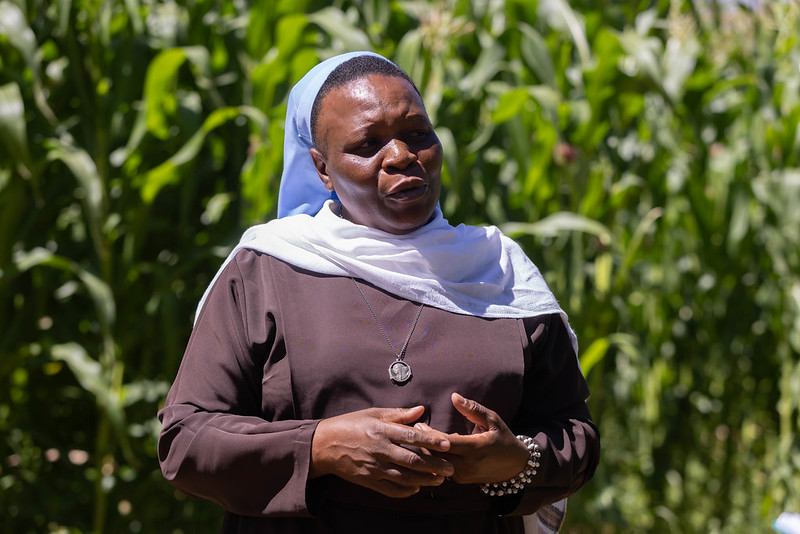- How Climate Smart Farming Transformed a Zimbabwe Children’s Home
When Sister Liliosah Gomba arrived at Sacred Heart Children’s Home in 2019, she was immediately confronted by an acute need for food.
The children at the facility were going through the day on one meal, which affected their well-being and learning.
As the Home Coordinator, she devised a new strategy to relieve the institution based in Nyanga, a farming area in Zimbabwe’s Eastern Highlands.
Her arrival at the home coincided with the introduction of Rural Transformation and Sustainable Livelihoods by Higherlife Foundation, which was meant to support rural households and children’s homes.
Under the program, homes were to be taught climate-smart agriculture practices and would receive inputs.
Sister Liliosah, realising the children’s home had vast tracts of land at its disposal, enlisted the children’s home under the program.
Under the program, the home started receiving maize seed, bean seed, and fertilisers enough to cover 17 plots, each about the size of a basketball court.
The idea was to ensure food and nutrition security while catalysing the adoption of farming methods that can withstand changing climatic conditions.
Since they started receiving the seed support, conditions have improved significantly, much to Sister Gomba’s delight.
“Seeing the children having their breakfast, lunch and supper is life-giving. I am glad we are beyond the days of struggling to feed them.
“When a child goes to school without eating well, they won’t perform. Now, our children are performing very well and looking very healthy,” she said.

Per year, they yield between three to five tonnes.
“We now meet all our food needs without buying. We now have enough maize to eat and to give to our poultry,” she said.
In addition to the maize, they have expanded chickens and a vegetable garden.

Although there is a drought this year, the orphanage is blessed with a perennial spring that flows from Mt Melleray towards their fields. It has offered some reprieve and a promise of some yield, although it may not be as good as that realised in previous years.
Their surplus yield is sold to nearby communities, using the returns to improve future furniture, buy uniforms and cover daily costs.
“From the proceeds of selling our excess grain, we can now make improvements. We upholstered the couches and bought a water tank to store potable water,” said Sister Gomba.
Sacred Heart Mt Melleray is one of the 100 registered children’s homes that receive financial and scholarship support from Higherlife Foundation.


